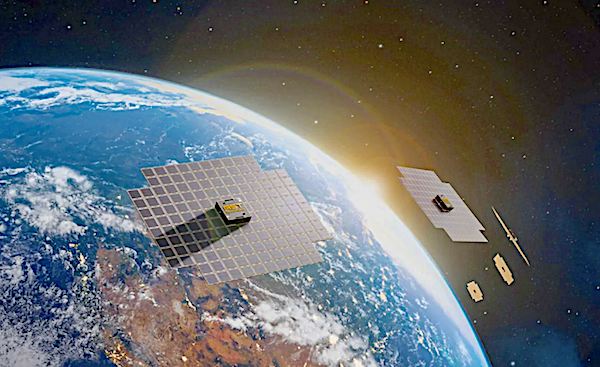
AST SpaceMobile has issued a prospectus with the aim of raising a half-billion dollars. AST says it will sell fresh shares in the company. It is using B. Riley Securities, Barclays Capital, BofA Securities, Cantor Fitzgerald, Deutsche Bank, Roth Capital Partners, Scotia Capital (USA), UBS Securities and William Blair & Co will act as sales agents.
The prospectus and the Q1 results issued on May 12 provided fresh information and data. Part of the results presentation saw AST tell analysts that the costs of launching its satellites had risen by 10 per cent, and that it would thus see the overall capital cost to around $22 million per satellite (up from $20 million per craft), and therefore AST would need $1.32 billion to launch its first 60 satellites between now and the end of 2026. AST wants 60 satellites to be in orbit by the end of 2026.
“The demand signal we are receiving is to get to service ASAP,” AST President Scott Wisniewski told analysts. “What you are seeing is a little bit of pull forward on launch when launches were hard to get. So, we have spent a little bit more than anticipated just to keep the timeline moving forward.”
AST has cash and cash equivalents of $874 million at March 31st.
AST has said it can begin non-continuous service in the US, Europe and Japan with just 25 craft in orbit, including the five Bluebird Block 1 models already in orbit. Full commercial global service will require about 90 satellites in orbit.
Wisniewski said AST has begun deploying essential satellite gateway Earth stations in its early target markets — the US, Europe and Japan — which its key mobile network partners are paying for. The company reported $13.6 million in gateway bookings in Q1 and will average $10 million per quarter for the rest of the year, he said.
AST’s key appeal is its ability to cover vast areas of low population density. CEO Abel Avellan said that while its major partners such as AT&T, Verizon, Rakuten and Vodafone would provide its coverage to their existing subscribers, the partners needed AST to connect with users in remote areas.
“We don’t service only in areas where there is absolutely nothing,” Avellan said. “Camping, vacation, remote locations – we can service areas where there is no support for full 5G. You need a lot of capacity for that, to fill up the network and be able to overlap terrestrial and satellite spectrum over the same footprint.”

